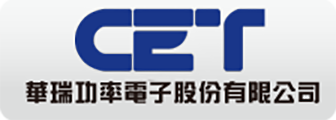- Ameya360 elektronische Komponenten Kauf Website >
- Industrie-Nachrichten >
- UMC Appoints Co-presidents as CEO Steps Down
UMC Appoints Co-presidents as CEO Steps Down
Taiwanese foundry United Microelectronics Corp. (UMC) is taking a page from its biggest rival's playbook, naming a pair of senior executives to lead the company as co-presidents as CEO Po-Wen Yen steps down.
On Wednesday (June 16), UMC announced Yen's retirement and appointed Shan-Chieh Chien (SC) Chien and Jason Wang co-presidents, collectively accountable for the overall performance of UMC. They will report directly to UMC Chairman Stan Hung.
Chien, a 30-year veteran of semiconductor R&D, is responsible for the core manufacturing and technology aspects of UMC, including R&D and operations. Chien has been with UMC since 1989 and has held various technology and engineering positions within the company ever since.
Wang will focus on the business aspects of UMC, including corporate strategy and planning, sales & marketing, and customer engineering. He joined UMC as vice president of corporate marketing in 2008 and served as president of UMC-USA from 2009 to 2014. Most recently he was a senior vice president in charge of global sales and marketing.
In appointing two executives to lead the company, UMC is following the lead of Taiwan Semiconductor Manufacturing Co. Ltd. (TSMC), its much larger rival. In 2013, TSMC named Mark Liu and C. C. Wei presidents and co-CEOs of the company reporting directly to Morris Chang. The arrangement has persisted ever since.
Dual leadership in company management has become more popular in recent years. EDA and IP vendor Synopsys Inc. has had two chief executives since 2012. MediaTek, a prominent Taiwanese SoC vnedor, also has two chief executives.
"Co-presidents Chien and Wang bring complementary experience and capabilities to enable UMC to have the best minds committed to our most critical decisions and execution ability,” Hung, UMC's chairman, said in a press statement.
Vorherige:MediaTek Chooses TSMC for 7nm
Online-Nachrichten-Anfrage

UMC Halts R&D Project with China Chipmaker
- Woche des heißen Materials
- Knappes Material: Seckilling
| Modell | Marke | Anfrage |
|---|---|---|
| CDZVT2R20B | ROHM Semiconductor | |
| RB751G-40T2R | ROHM Semiconductor | |
| MC33074DR2G | onsemi | |
| BD71847AMWV-E2 | ROHM Semiconductor | |
| TL431ACLPR | Texas Instruments |
| Modell | Marke | Zum Aufschnappen |
|---|---|---|
| ESR03EZPJ151 | ROHM Semiconductor | |
| TPS63050YFFR | Texas Instruments | |
| IPZ40N04S5L4R8ATMA1 | Infineon Technologies | |
| BU33JA2MNVX-CTL | ROHM Semiconductor | |
| BP3621 | ROHM Semiconductor | |
| STM32F429IGT6 | STMicroelectronics |
- Woche des Rankings
- Monatliche Rangliste
Qr-Code des offiziellen ameya360-Kontos
Identifizieren Sie den QR-Code, dem Sie folgen möchten


Please enter the verification code in the image below:
























